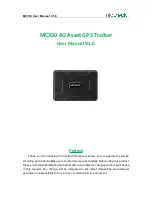
AMY-5M - Hardware Integration Manual
GPS.G5-MS5-08207-A3
Preliminary
Design-in
Page 35 of 54
Passive antennas
Active Antennas
A
RF
_
IN
G
P
S
R
e
c
e
iv
e
r
LNA
B
D
RF
_
IN
G
P
S
R
e
c
e
iv
e
r
LNA with appropriate ESD rating
(see Table 8)
Figure 22: ESD Precautions
2.11.4
Electrical Overstress (EOS)
Electrical Overstress (EOS) usually describes situations when the maximum input power exceeds the maximum
specified ratings. EOS failure can happen if RF emitters are close to a GPS receiver or its antenna. EOS causes
damage to the chip structures.
If the RF_IN is damaged by EOS, it’s hard to determine whether the chip structures have been damaged by ESD
or EOS.
2.11.5
EOS protection measures
EOS protection measures as shown in Figure 23 are recommended for any designs combining wireless
communication transceivers (e.g. GSM, GPRS) and GPS in the same design or in close proximity.
Passive antennas
Active Antennas
(without internal filter
which need the module antenna supervisor
circuits)
C
RF
_
IN
G
P
S
R
e
c
e
iv
e
r
LNA
GPS
Bandpass
Filtler
D
RF
_
IN
G
P
S
R
e
c
e
iv
e
r
L
GPS
Bandpass
Filtler
C
C
L
L
LNA with appropriate ESD
rating and maximum input
power (see Table 8)
Figure 23: EOS and ESD Precautions
2.11.6
Electromagnetic Interference (EMI)
Electromagnetic interference (EMI) is the addition or coupling of energy released from any RF emitting device.
This can cause a spontaneous reset of the GPS receiver or result in unstable performance. Any unshielded line or
segment (>3mm) connected to the GPS receiver can effectively act as antenna and lead to EMI disturbances or
damage.
















































